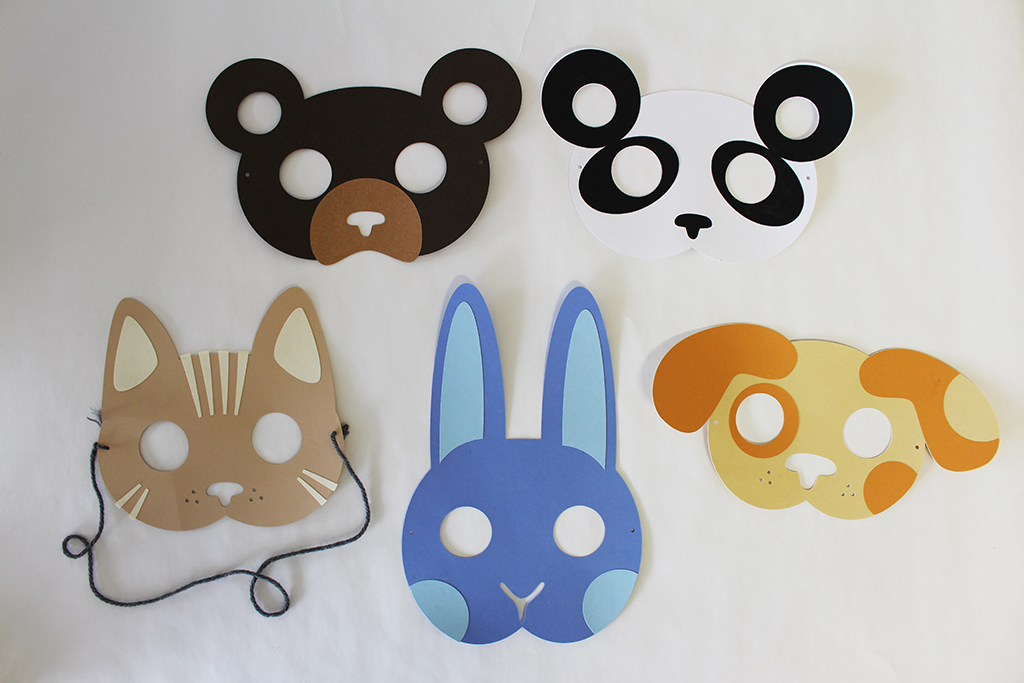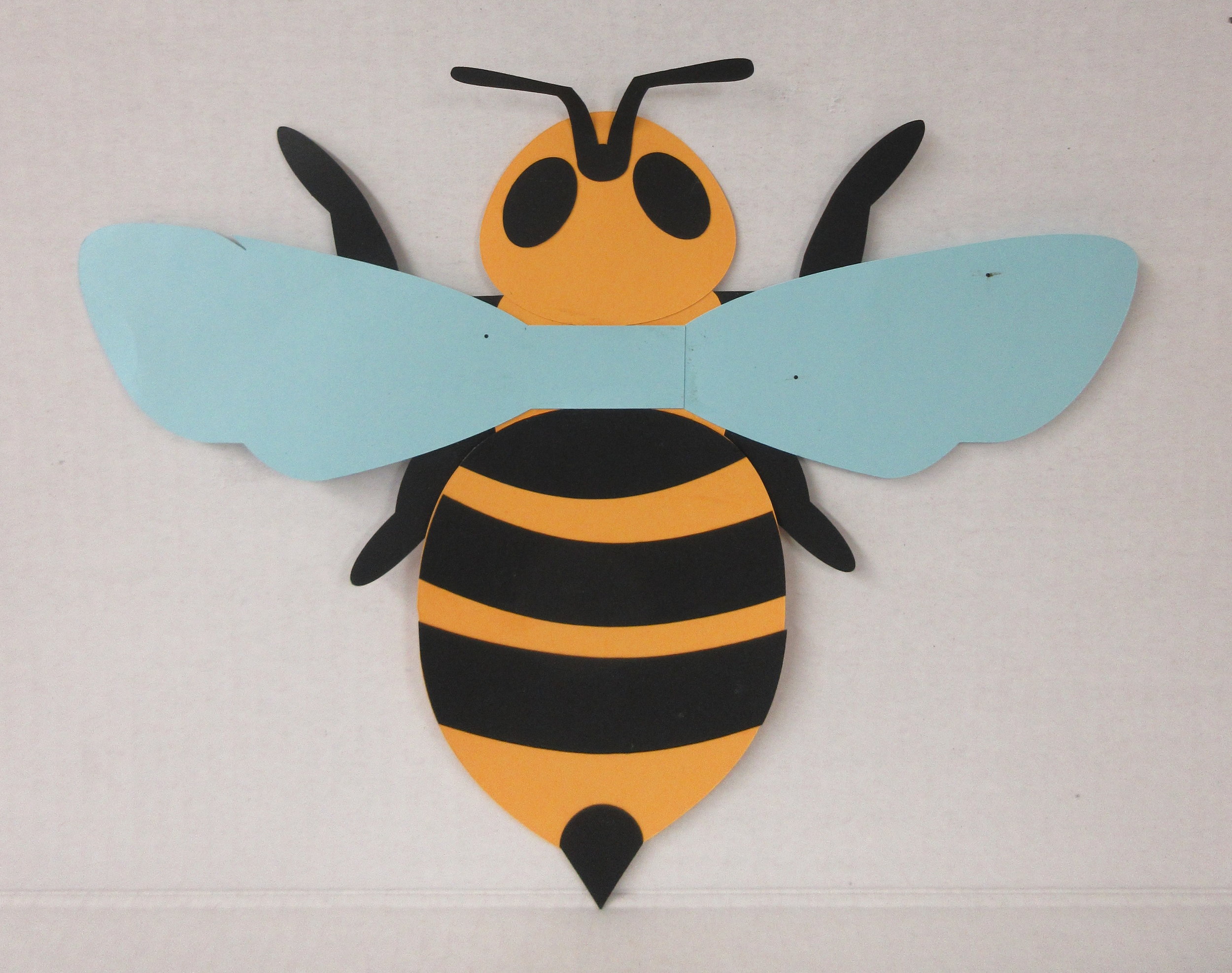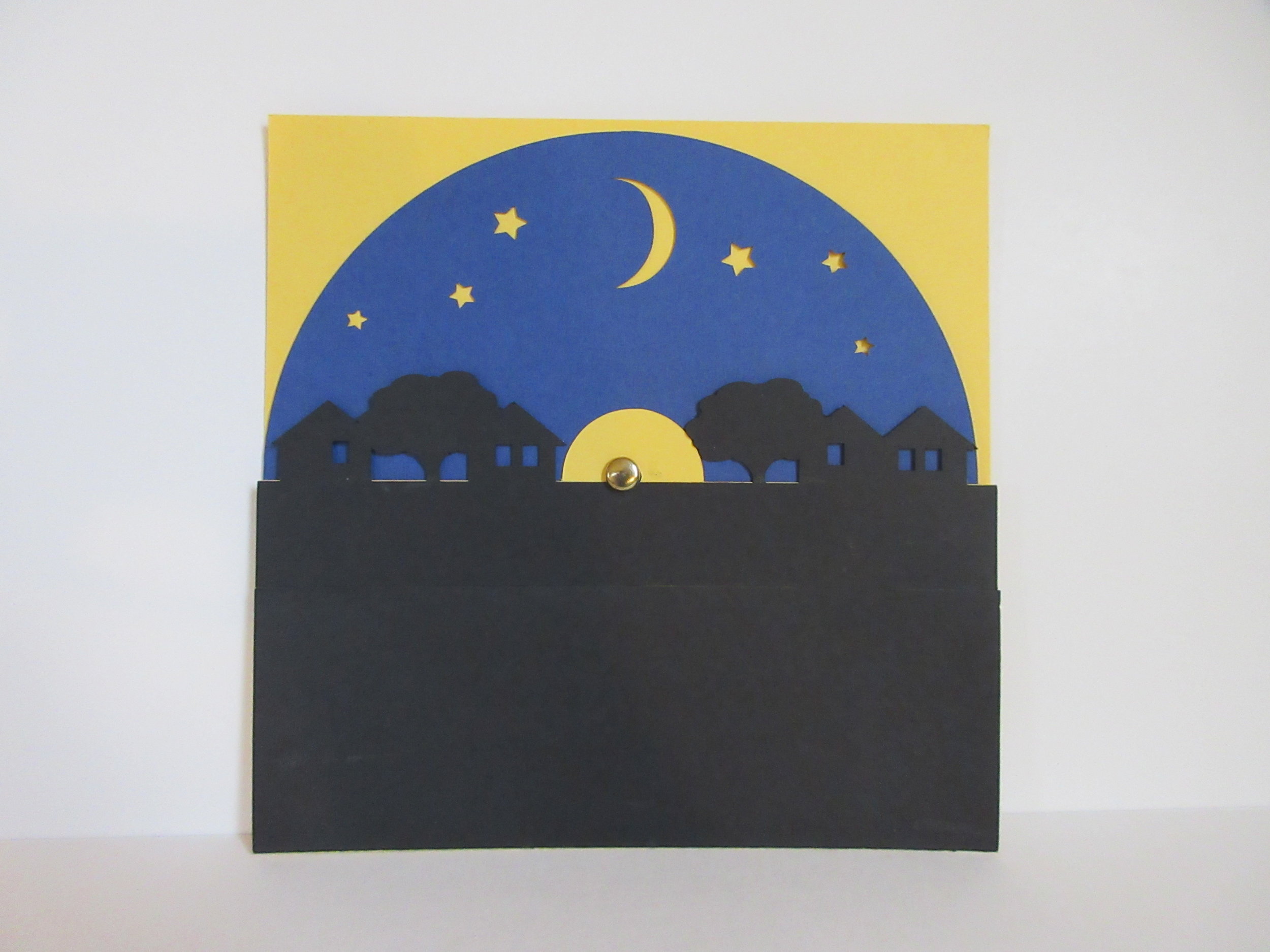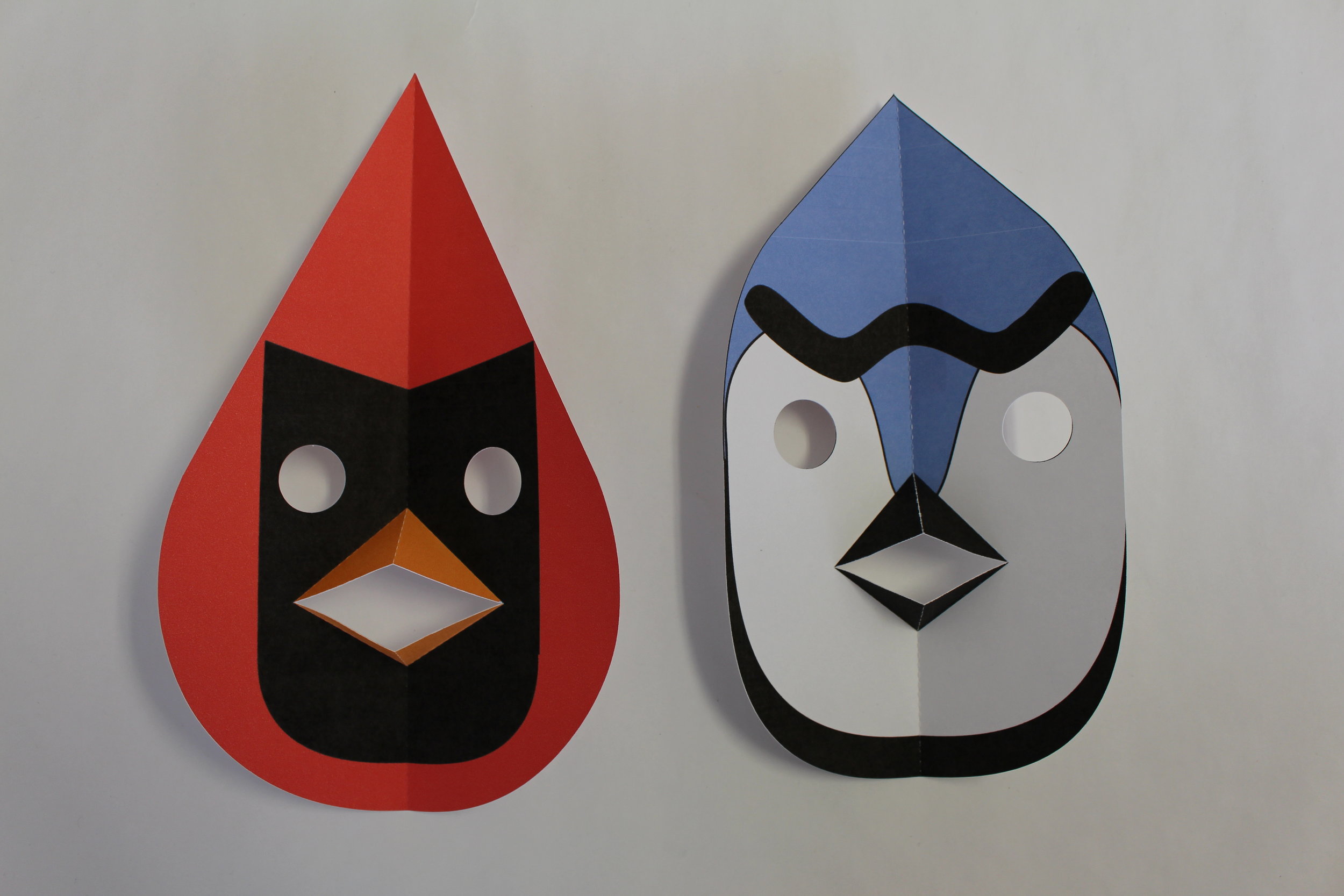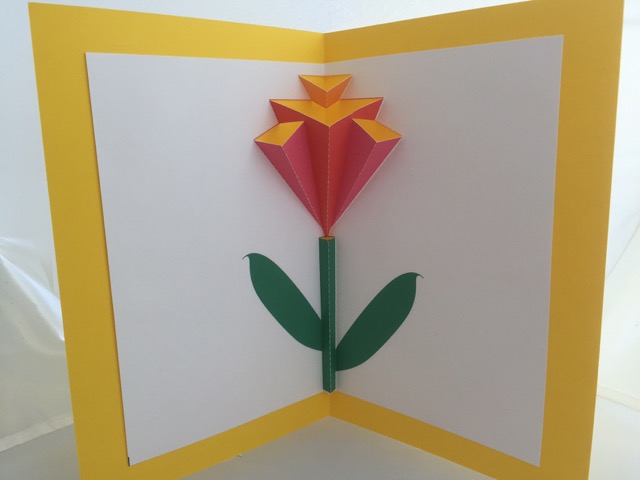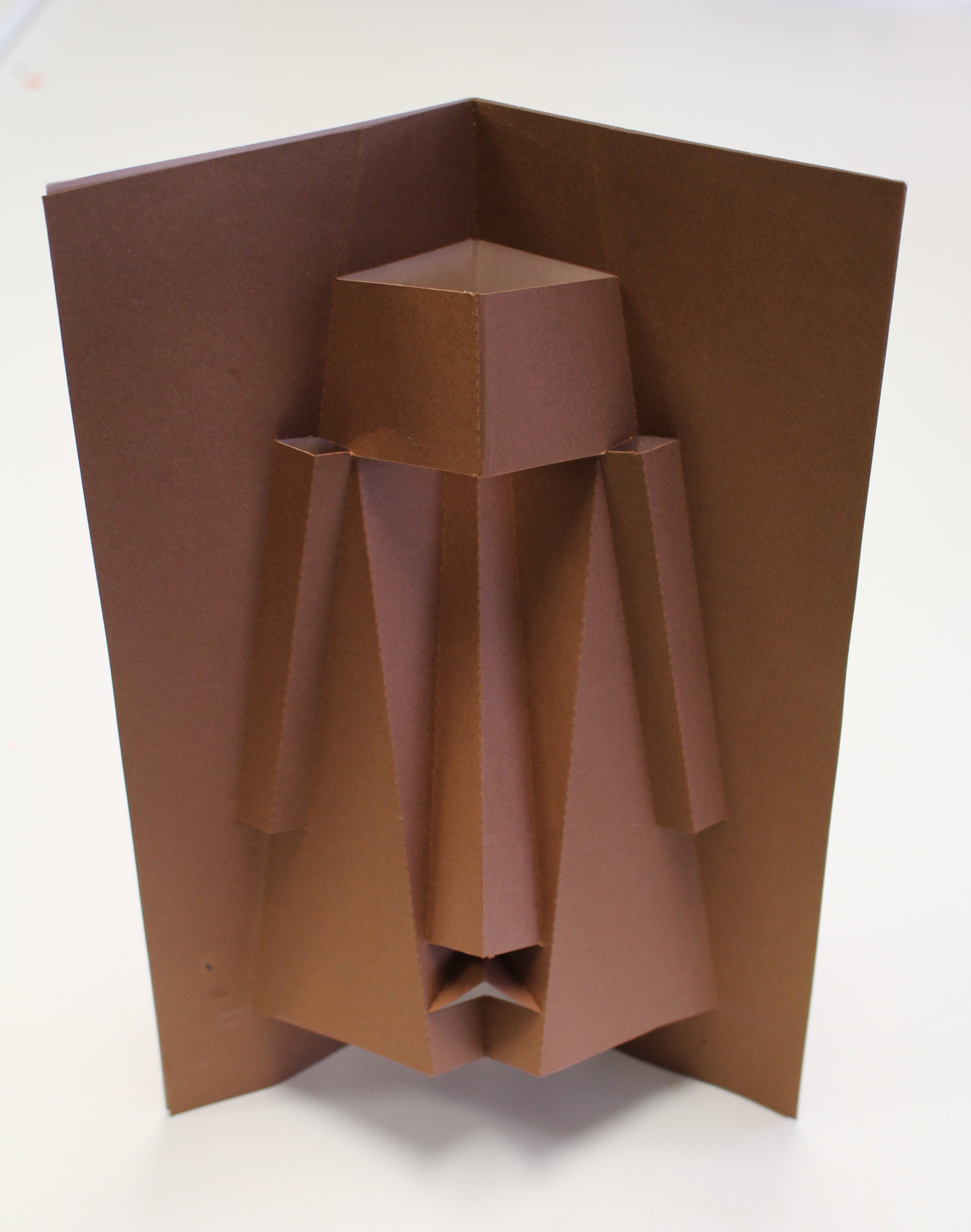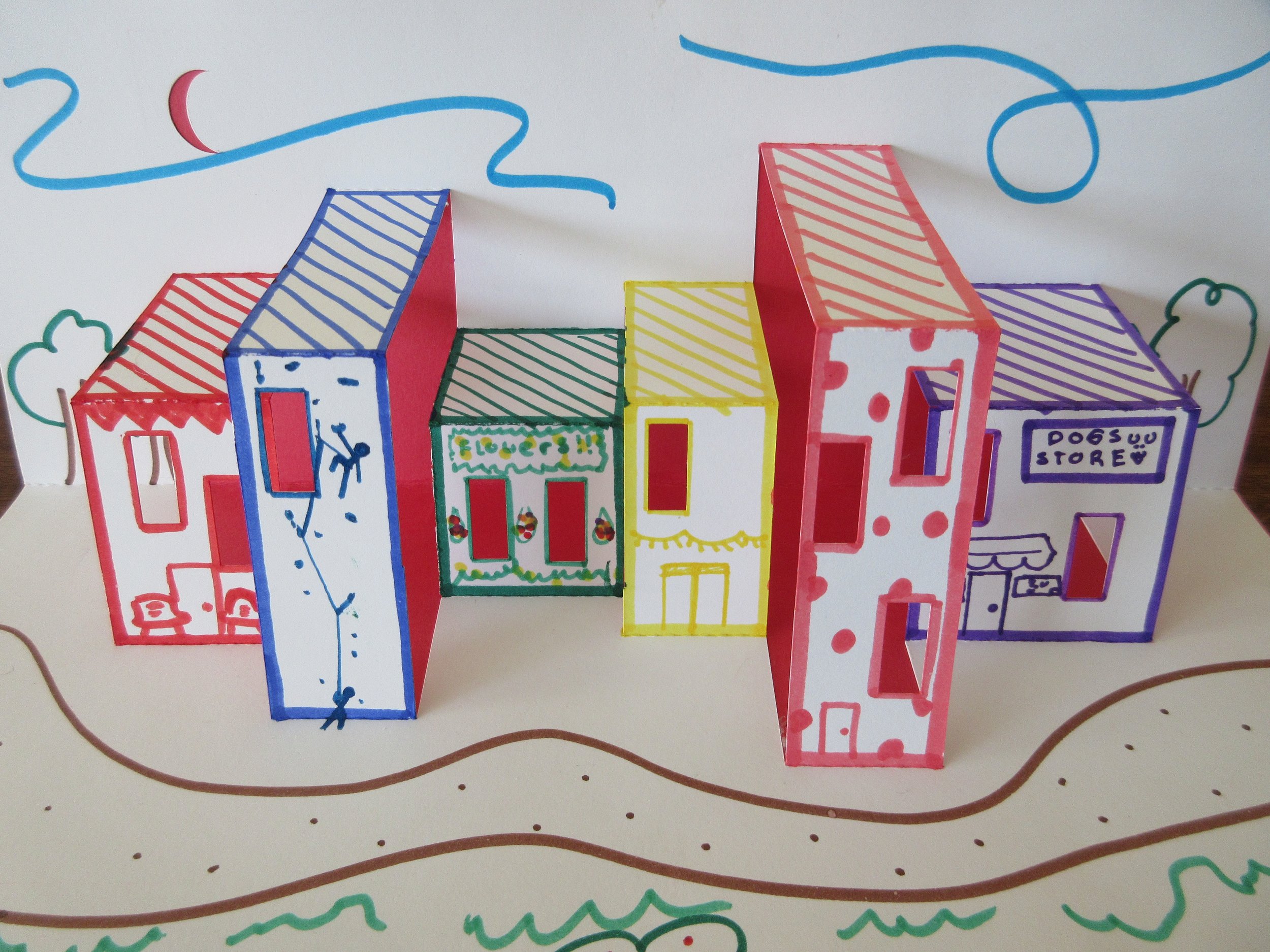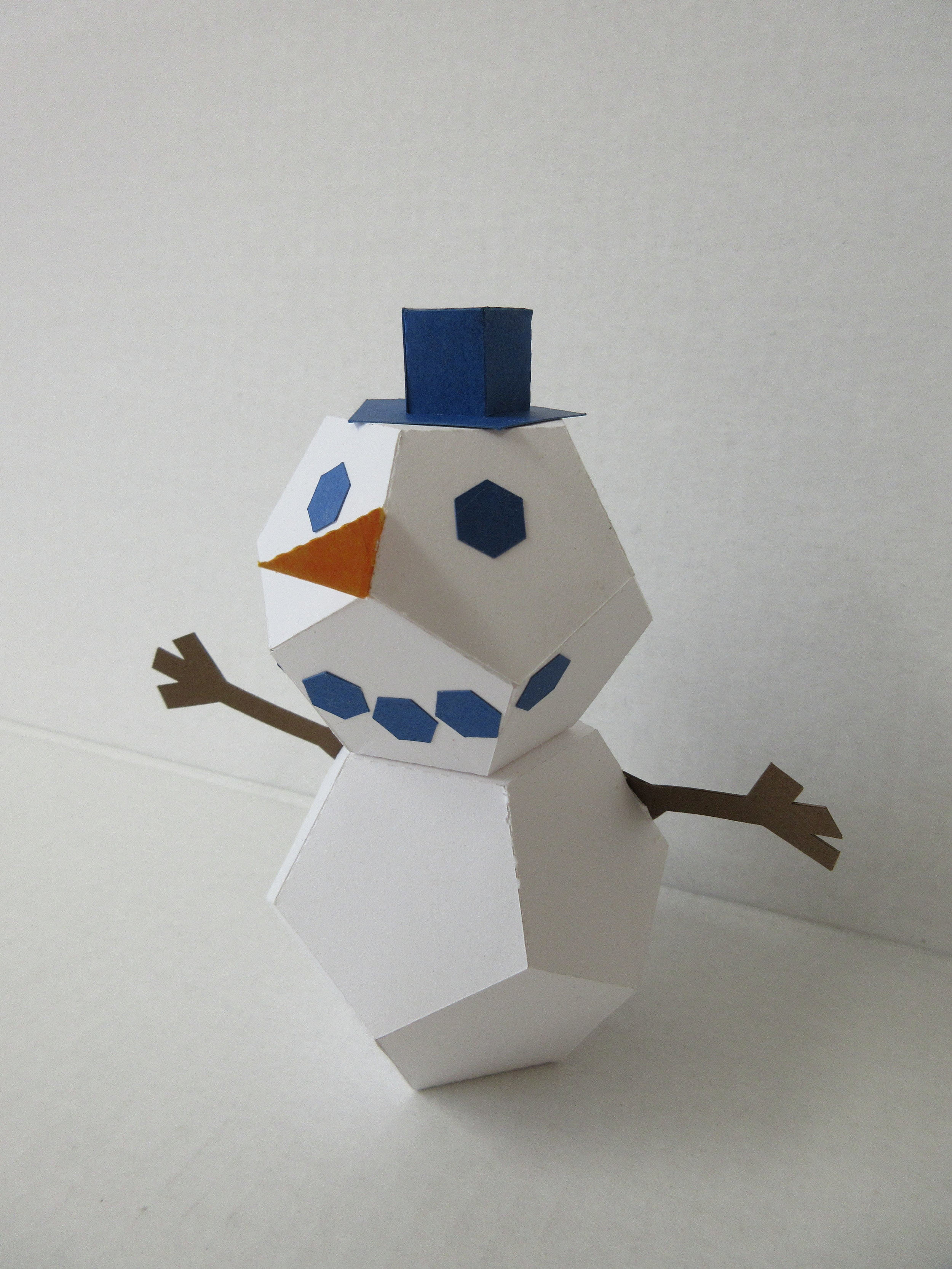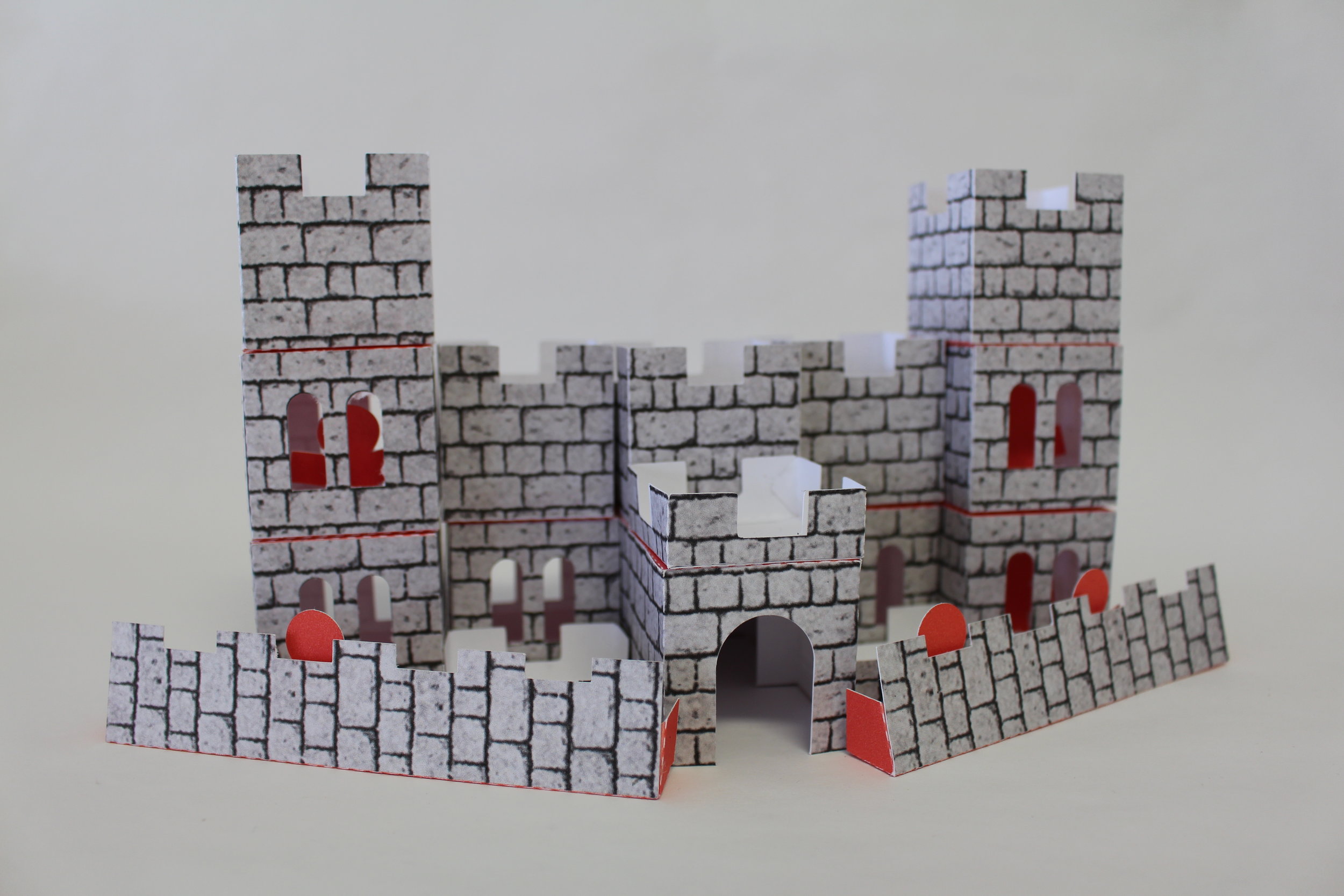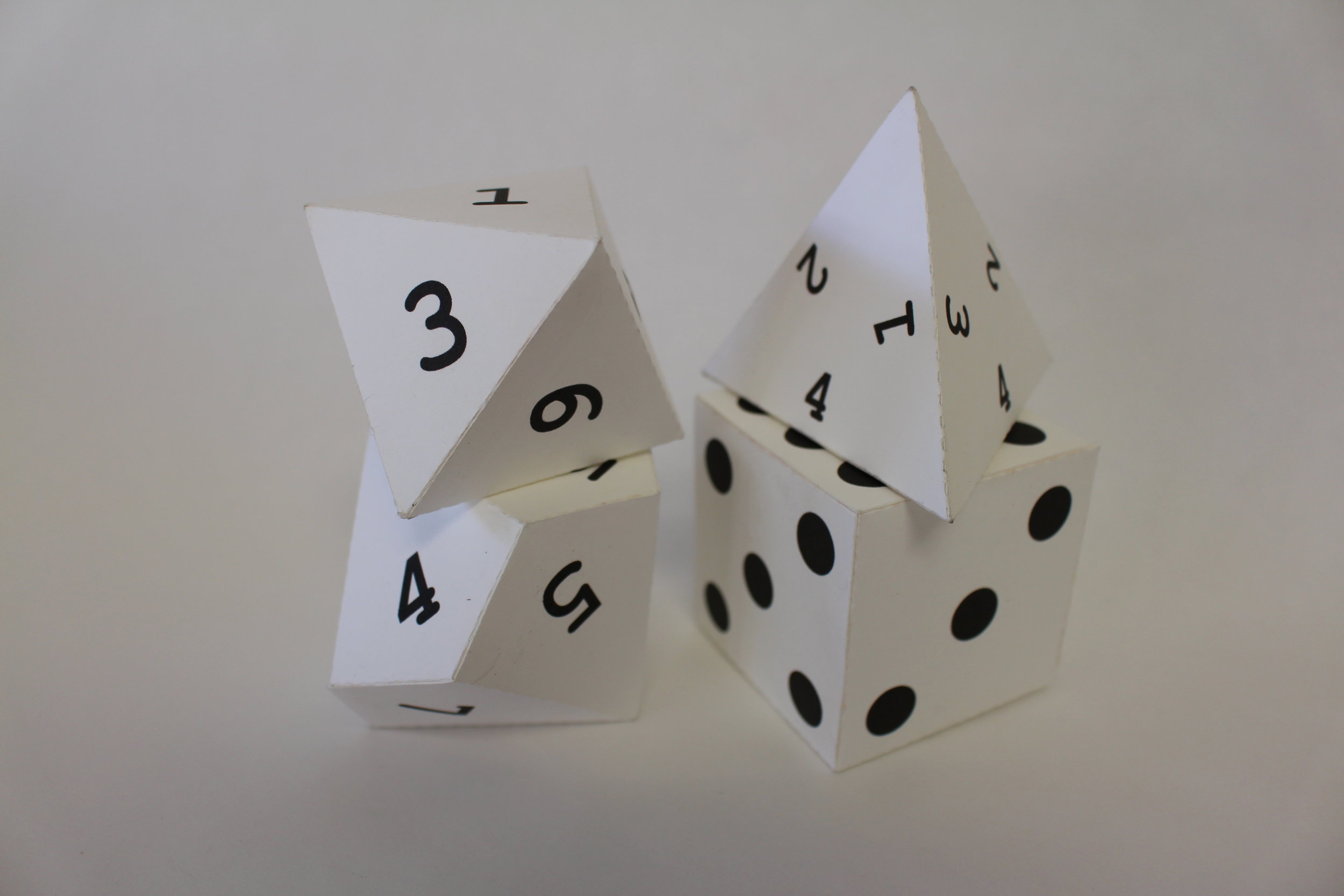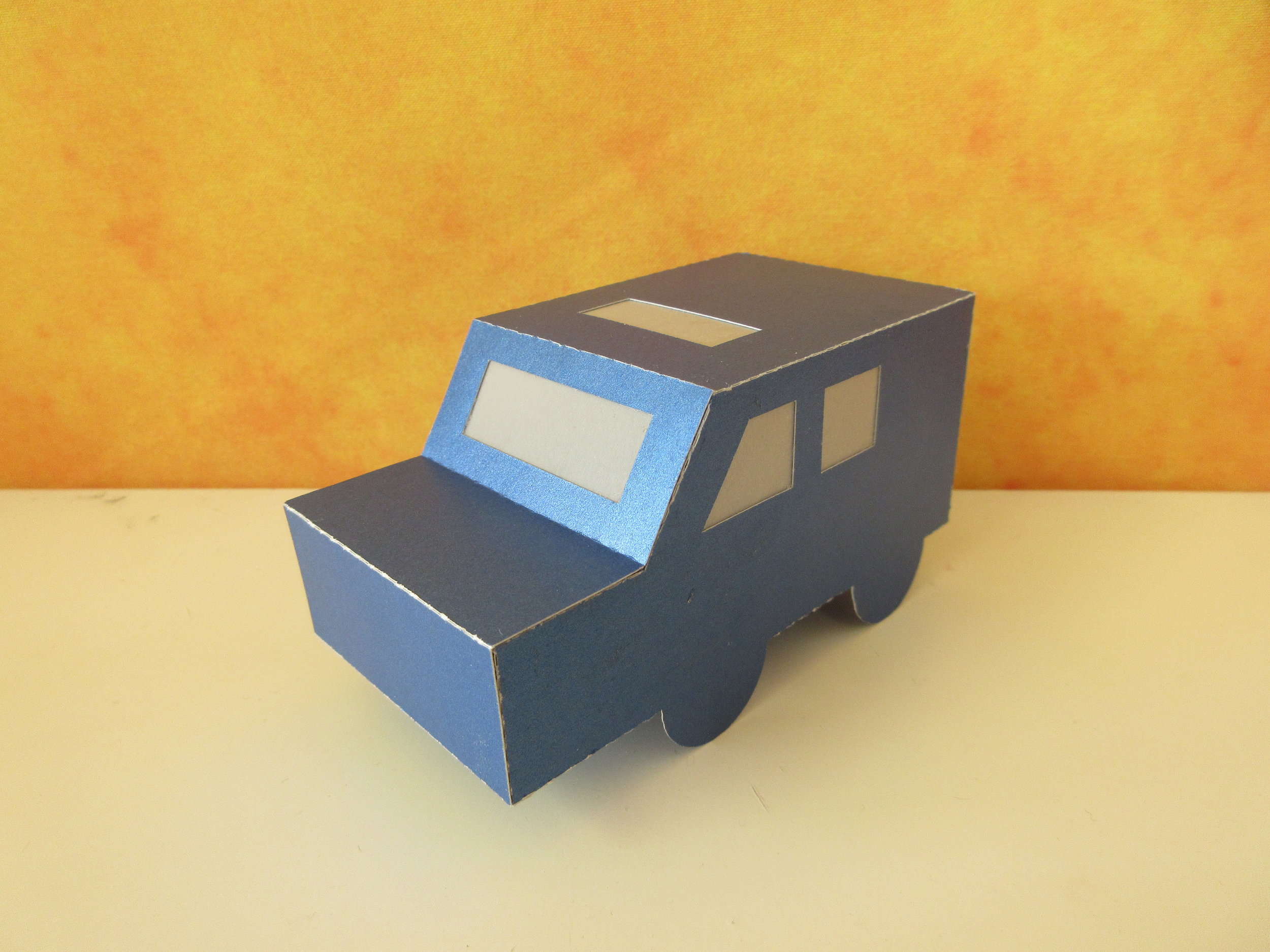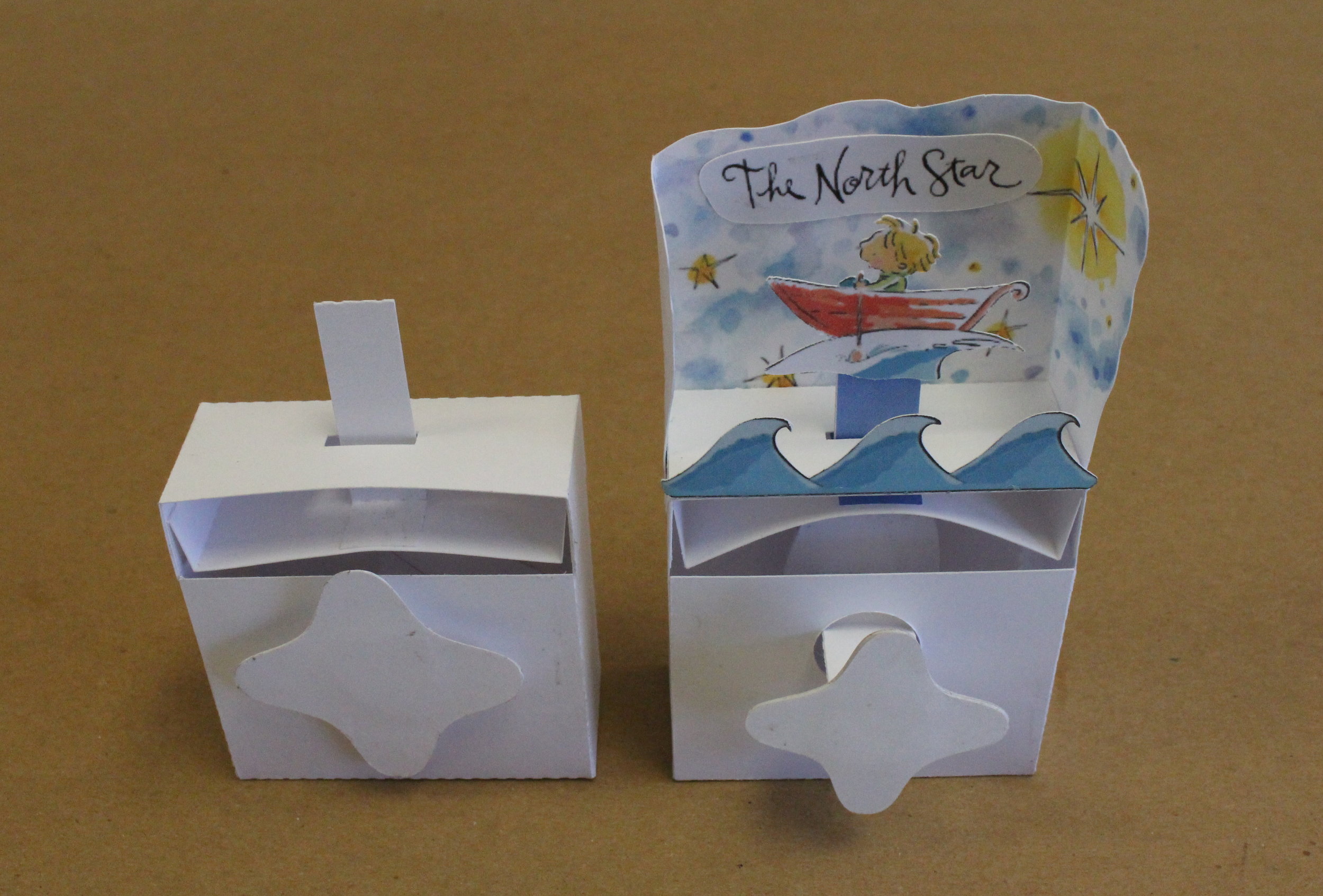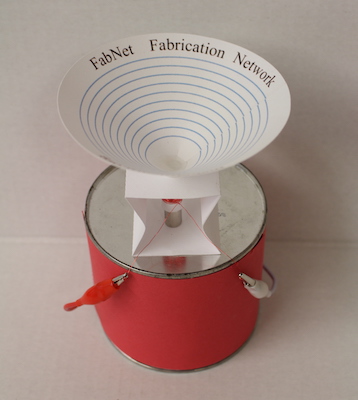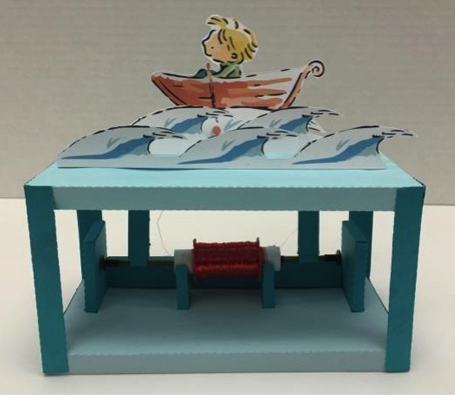The FabMaker Studio Classroom
In FabMaker Studio student create range of projects from simple to sophisticated 2D designs, pop-ups, 3D geometric constructions, and working machines.
FabMaker Materials & Management Tips
From the library to the makerspace to the classroom, the FabMaker Studio can take many forms. The following are ideas to get started. If you have any additional questions, please connect with Andrea Calvin at andrea@reynoldstlc.org.
Materials: The Fab Basics
Paper or cardstock
Silhouette digital cutter (we recommend one for 25 students)
Devices with Internet connection
Extra sticky mats (we recommend 3 for 25 students)
Management: The Fabrication Station
The web-based program FabMaker Studio, works on any device connected to the Internet. This is perfect for schools with Chromebooks and iPads/Tablets. However, to fabricate you will need a PC or a MAC. This is because the Silhouette line of digital cutters require drivers to be installed. We recommend establishing a “Fabrication Station” - one device, with an Internet connection, that is used for the Silhouette. Students can save their FabMaker project to their online files or Google Drive, log out, and log back in at the Fabrication Station to create a finished design.
Lee Elementary School, Lee, MA
Brandon Boule at Lee Elementary School in Massachusetts has been using FabMaker Studio with students from kindergarten to third grade.
“(In kindergarten) they added 2D shapes to the sides and then used their creation as a dice to play a shape game. First grade worked on adding shapes together and then welding them to make a larger shape. We then related that to shapes that are opaque, translucent, and transparent. Third grade used a pop up template and then modified it for a Valentine's Day card.”
Castle Rock Middle School, Castle Rock, CO
Yvonne Miller, librarian at Castle Rock Middle School, has added FabMaker Studio to their Makerspace library. FabMaker Studio among 3D printers, robotics, a CNC machine, a 2D fabricator, littleBits and MakeyMakey products, gives students an effective way to learn the prototyping process in their Design Thinking curriculum.
The paper prototyping gives students a way to test out their designs before creating them on the 3D printer. 8th grade students have been tasked with creating tiny homes with the FabMaker Studio software, and World Cultures teachers are utilizing FabMaker Studio to teach about Japanese culture and the art of origami. For more info on how this school is using FabMaker Studio Maker Studio in their curriculum, click here.
Burnham Brook School, Canterbury, NH
Kim Slayton from the Burnham Brook School in Canterbury, New Hampshire utilizes the FabMaker Studio Maker Studio for art, science, and social studies projects. Students create paper sculptures in art class, and use some of the 3D Ready-Made projects, such as the castle and automaton, for writing prompts and story mapping.
Being a classroom full of different skill levels and abilities, the software is easily accessible for all. Those who are comfortable design and fabricate their own projects, while others use pre-designed projects or draw what they want and have their teachers assist. One child, who only had 4 fingers on hand due to a birth-defect, loves using the FabMaker Studio digital fabricator to create elaborate designs she may not have been able to cut out otherwise. For more info on how FabMaker Studio has impacted this classroom, click here.
Sir Charles Tupper School, Halifax, Nova Scotia
Laura Kennedy, a third-grade teacher at the Sir Charles Tupper School in Halifax, Nova Scotia, uses the FabMaker Studio for teaching everything from geometry to storytelling.
The biggest lesson her students have learned from her FabMaker Studio lesson plans though, is confidence. Since the projects are only cut out on paper, and the program will show what the design will look like before it is printed, students feel safe taking risks. Feeling confident in their projects, even the quietest students were able to proudly present to the class what they had made. For more info on how Laura got her students acquainted and comfortable with the software, click here.
Stem Launch K-8, Thornton, CO
Katherine Klaver, STEM coordinator at Stem Launch K-8 challenged 170 sixth graders to use FabMaker Studio to tackle the Tiny House Challenge. With housing costs skyrocketing, Katherine asked her students to design a tiny home that is cost effective, energy efficient, and can fit a family of 4. With this real life scenario in mind, the kids got to work.
The kids researched the current housing situation in the Denver Metro area, and the need for more affordable options. The utilized their math skills to create tiny house designs which they they fabricated in FabMaker Studio. Then, once they had a model they knew would work, they built physical models. For more on how they created this project, click here.
Oak Ridge school, Sandwich, MA
Carly Smith, Art and Technology Teacher at Oak Ridge School fuses creativity and innovation together every day with her students to design in FabMaker Studio. Teaching both Art and Technology, Carly is always looking for fresh ways to combine the two. Between creating digital artwork on iPads, and creating illusions in photography, her students create 3D pieces of art using the FabMaker Studio .
An activity that was definitely a class favorite was creating a paper town. Students designed and fabricated different buildings, tents, and monuments then used LEDs and coin cell batteries to light up the city. For more info on her fun and engaging classroom, click here.
Augustine F. Maloney Elementary, Blackstone, MA
Monica Carty is an elementary technology teacher at Blackstone-Millville Regional School District. She has been using FabMaker Studio in her after school STEM club. Among other projects, such as learning budgeting by pretending to be a graphic designer on a budget creating their own Valentine’s Day cards, a club favorite has been creating balloon powered cars!
In the club’s conclusion project students designed, developed, and created balloon powered cars. Students had a wide range of tools and supplies at their disposal. The only requirement was the car had to move by balloon power!
Students quickly went to work developing a sketch, or basic blueprint, and a supply list. Once it was time to test their cars, the students felt at ease, even if they didn’t work! The after school club atmosphere alongside a fun project takes the stress out of STEAM learning. For more info on how Monica utilizes FabMaker Studio in her after school club, click here. For more info on the Valentine’s Day card project, click here.
Dana Palmer, STEAM teacher at Arrowwood Elementary in Douglas County, CO, has integrated FabMaker Studio into her lesson plans to help students connect lessons and concepts into real life situations they can fully grasp. A large part of her FabMaker Studio lesson plans involves the older students are creating manipulatives for younger students, specifically designing prisms which the younger students will then build.
This lesson, which used to be taught using pipe cleaners and straws, now has older students design and younger students build their own 3D prisms using the FabMaker Studio software. Having accurate prisms allows them to better understand planes, vertices, etc. For more info on the educational leaps this class is taking, click here.
Centennial Middle School, Yuma, AZ
Kaitlin McGill, a science teacher, Centennial Middle School in Yuma, AX, has been using FabMaker Studio with her Physics Club. They have used it for a variety of projects, but a class favorite was creating a parachute to get a toy lizard safely to the ground.
Kaitlin started the project by introducing students to Newton’s Laws of Motion and helping them follow the engineering design process to create this project. The kids created many prototypes before finding what actually worked. After 6 weeks, and about 10 faulty prototypes, the students worked collaboratively to create the winning design. To learn more about their projects and design process, click here!
Chilmark School Chilmark, MA
Rebecca Barca, technology support coordinator at Chilmark School on Martha’s Vineyard, MA, challenged her students to replicate their school using FabMaker Studio. Through a thoughtful collaboration, the students completed their challenge beautifully. Click here to see a video of their process and more info on how Chilmark got involved with FabMaker Studio.
Lighthouse ArtCenter
Full STEAM Ahead Summer Art Camp in Tequesta, Florida
Fernando Porras, camp instructor at Lighthouse ArtCenter Full STEAM Ahead Summer Art Camp in Tequesta, Florida worked with kids ages 5-12 using FabMaker Studio to design and fabricate 2D and 3D objects from paper and cardstock to create real and imaginary habitats, communities, and worlds.
The kids created projects that correlated with the camp theme each week. They created everything from underwater worlds filled sea creatures for their Oceanic Exploration theme, to full Lion King scenes made during their Safari theme. In other weeks, they replicated Hogwarts, created a prehistoric landscape complete with dinosaurs, and made trains, planes, automobiles and cable cars to connect the worlds.
The camp goers truly learned to collaborate and communicate with each other to creatively build off of other’s ideas. The result was a room of beautiful projects and students gaining confidence in their STEAM skills. To learn more about the projects created at Lighthouse ArtCenter Full STEAM Ahead Summer Art Camp, click here.
Walpole Public Schools
Boyden Elementary School
The Boyden Elementary School in Walpole, MA is using FabMaker Studio in first-grade. Students are experimenting with shapes and learning to construct 3D solids.
One class initially wanted to build a snow village but instead they built a snow fort, by gluing magnets in white cubes to make them stick. The teacher Karen Wolff also used the program to teach her students about the anatomy of bees by diagramming the bee life cycle and creating 2D visuals. For the 100th day of school, her students practiced counting by 10s when they fabricated 100 3D buildings. They then sorted the buildings in groups of 10s. The students gained valuable experiences in architecture and mathematics. Read more about this class on The Wolff Den.
Also at the Boyden School, Cheryl Ivatts and her fourth grade students embarked on a FabMaker Studio journey mapping out the City of Ember.
Cheryl started the lesson by reading “City of Ember,” written by Jeanne Duprau to her class. The students were hooked on each word, and then were given the opportunity to design their bulletin board based on the story. Eagerly, students took to FabMaker Studio, creating scenes from the book using pre-designed buildings, and designing their own 3D shapes to represent different objects. To learn more about how Cheryl utilized FabMaker Studio for this literary lesson, click here.
Yuma School District One
FableVision Learning's Creativity Curriculum & Evaluation Specialist Dr. Denine Jimmerson worked with students in Arizona’s Yuma School District One. Using FabMaker Studio, a group of third through sixth graders became architects for the day. They were challenged to build a scale model of their ideal 21st century classroom. The group started by measuring their actual classroom and then worked together to develop a scale model of their proposed plan. The students had a blast while learning math in an engaging, real-world context.
The iTEAM KiDS from 4th Avenue Jr. High hosted two FabMaker Studio PD sessions lead by middle school students. The students demonstrated the program on how to use the fabricator in the session. Teachers and principals were able to get hands on experience with the program and have student support. To learn more about student-led PD in Yuma, click here.
Goodnoe Elementary School, Newtown, PA
Maryann Molishus is a huge advocate for experiential learning and understands the importance of STEM in the classroom. As a fifth-grade teacher at Goodnoe Elementary School in Newtown, PA, she has used FabMaker Studio to teach math and engineering concepts.
In her fifth-grade class, students, working in small groups, are challenged into collaborating and creating interesting sculptures that includes a cone, cube, two rectangular prisms, a cylinder, a square pyramid, and one other solid shape. Each sculpture had to have a total volume of 60-250 cubic inches. This challenge, along with FabMaker Studio, engaged students to learn how to calculate volume, and how to design various shapes.
The after-school STEM Club, she moderates, is using FabMaker Studio to learn new skills such as computer programming and digital fabrication. In the school’s STEM Special program, students are using Fab@School Maker Studio to work on their own independent digital projects, some of which involve electronics and cardboard. Learn more about Ms. Molishus.
“Project-based learning (with FabMaker Studio) is a great way to learn as it allows students to become fully invested in their work, so much so that they forget they are even doing ‘school work.’ I can honestly say that the students are actively and happily engaged in mathematical conversations at a fifth grade level and more!” -- Maryann Molishus
CU Science Discovery
University of Colorado
CU Science Discovery is an educational outreach program orchestrated by the University of Colorado. The programs are designed to engage students in the scientific process, while also connecting them to the science and technology that are present in their everyday lives.
Stacey Forsyth, Ph.D Director of CU Science Discovery, worked with creative young engineers over a winter break to design pop-up cards in FabMaker Studio. The students explored the fundamentals of engineering and the basics concept of circuits as they crafted their projects. Learn more about Dr. Forsyth's Fab project.
Ready to buy? Visit FableVision Learning for more information.

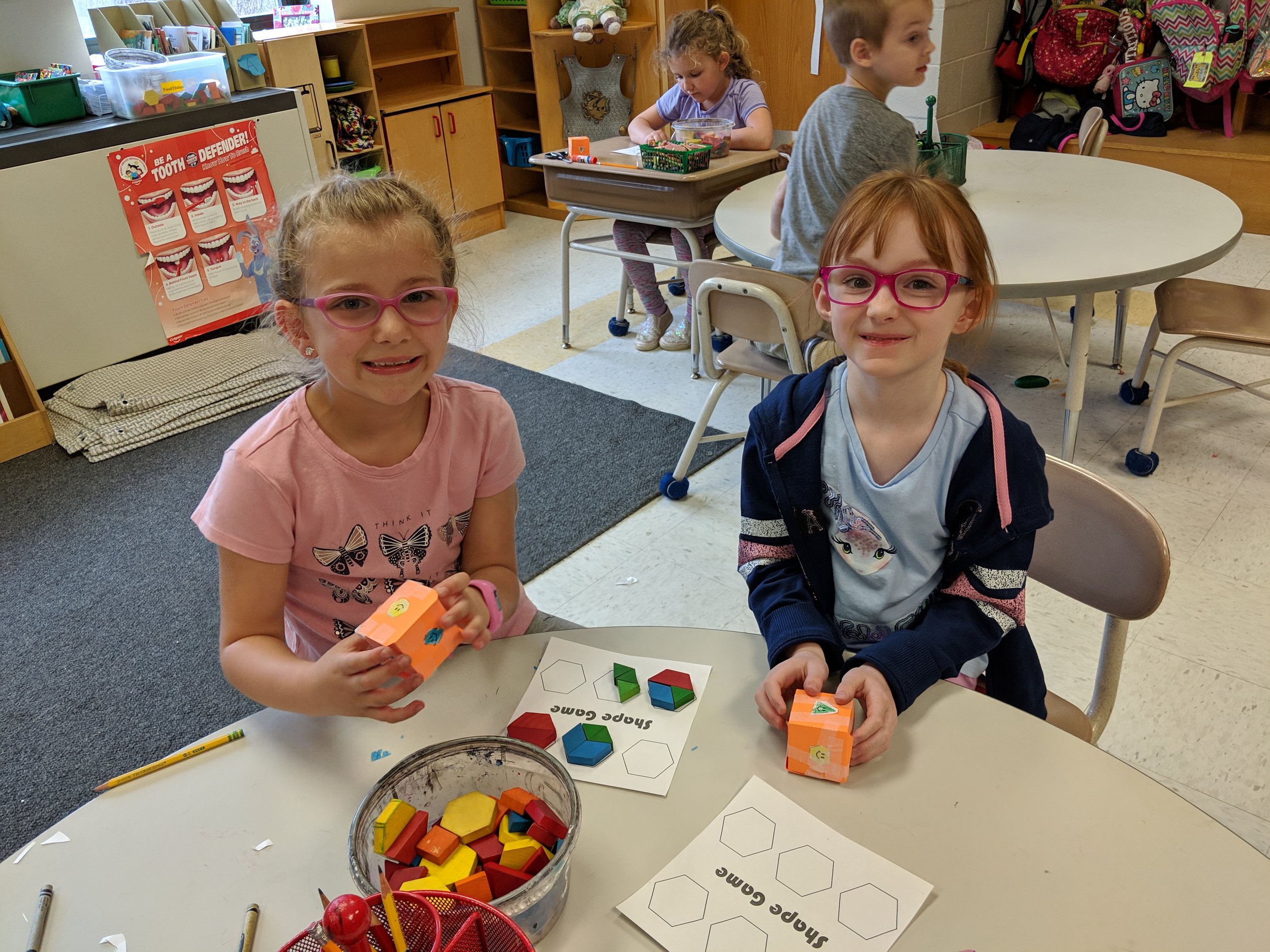
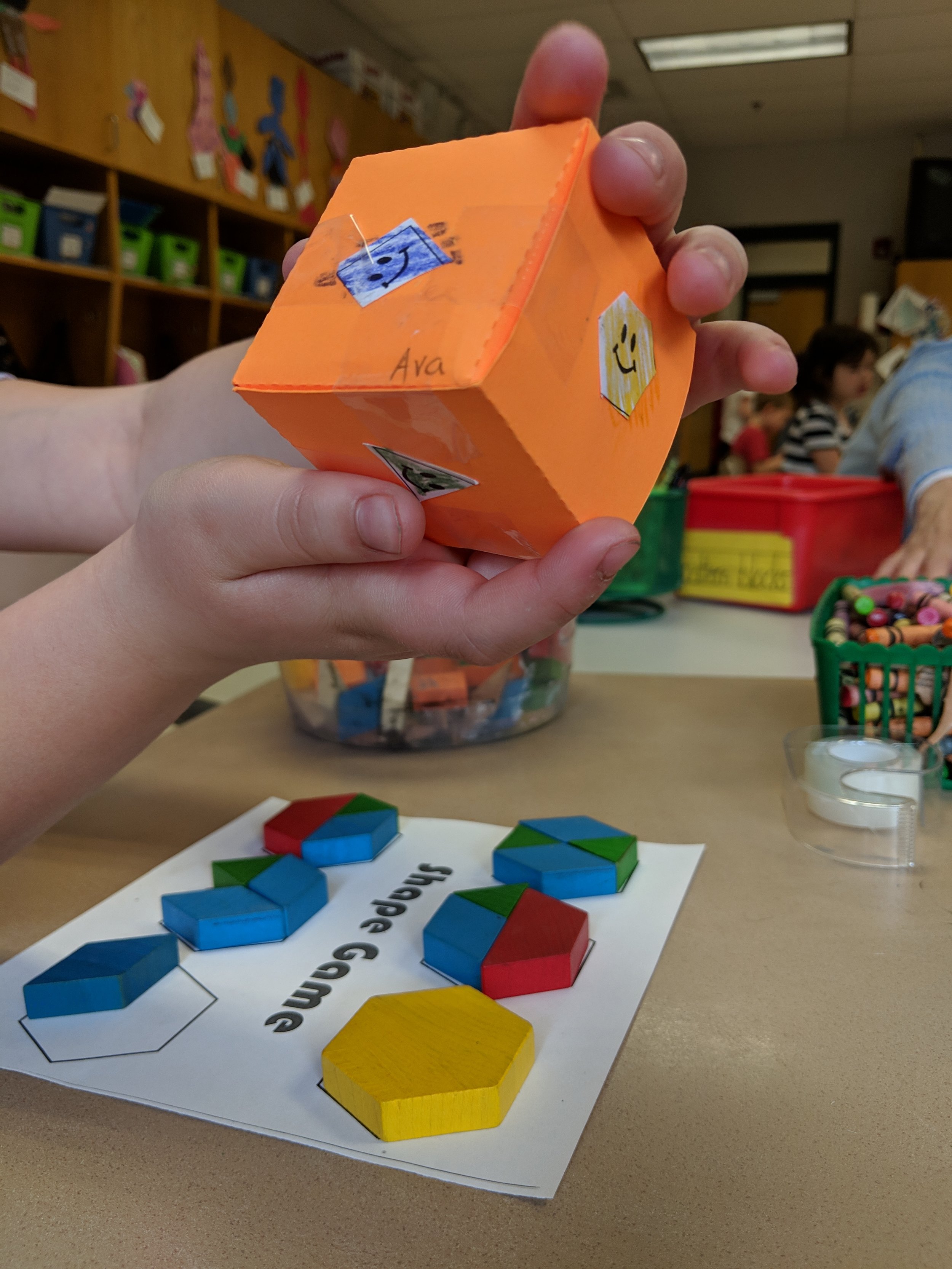
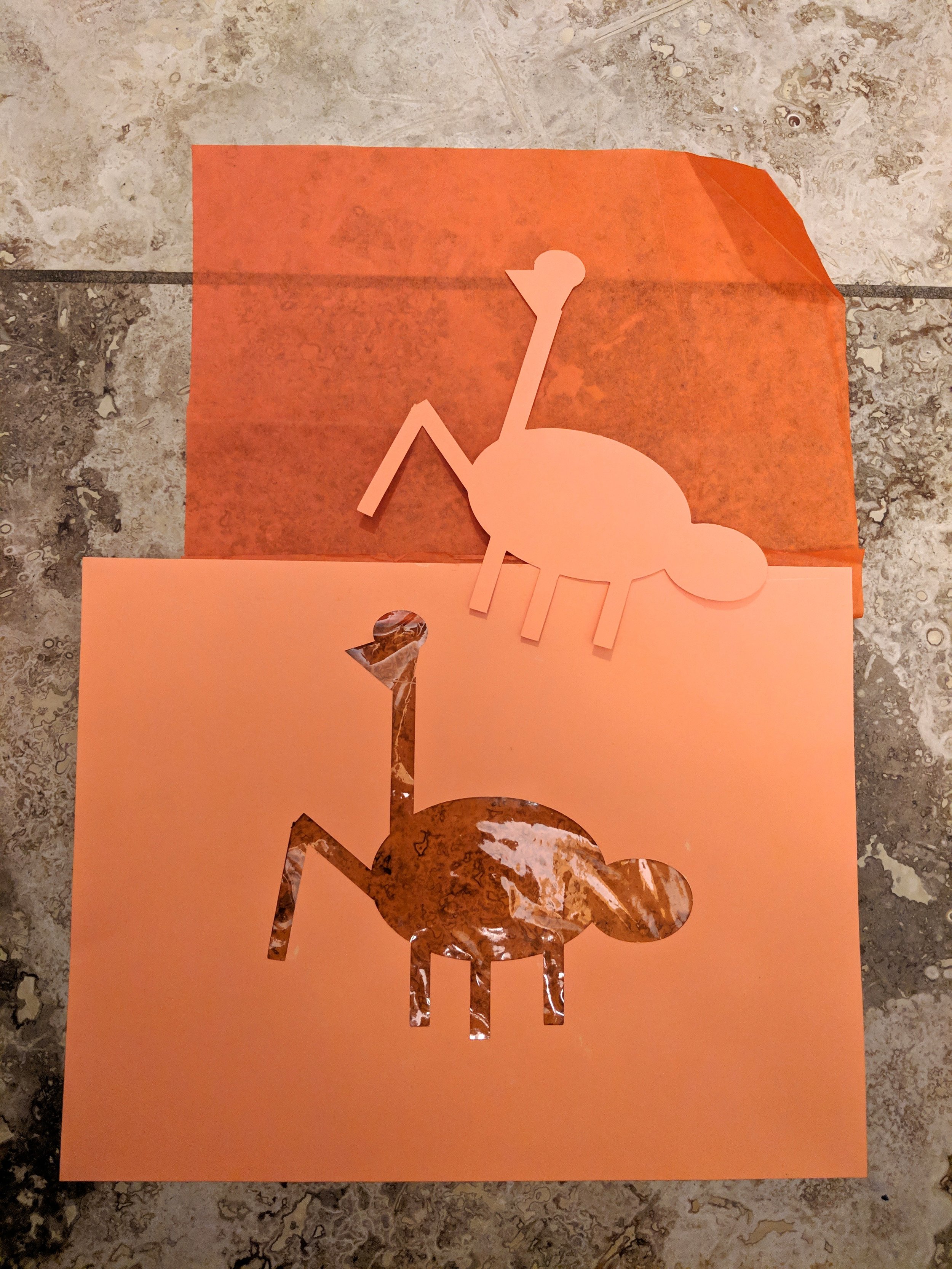
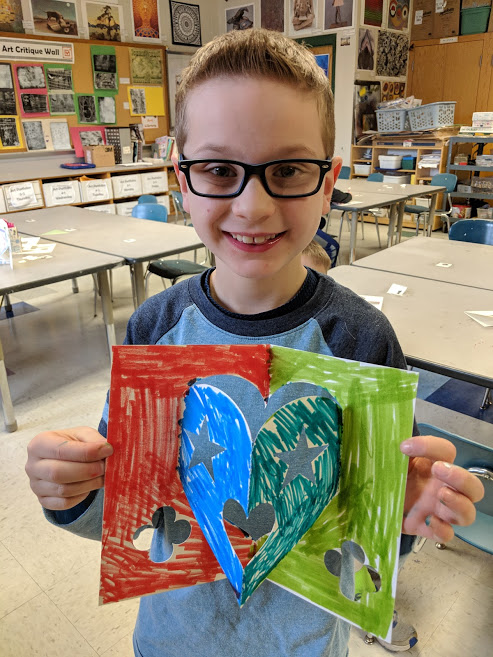
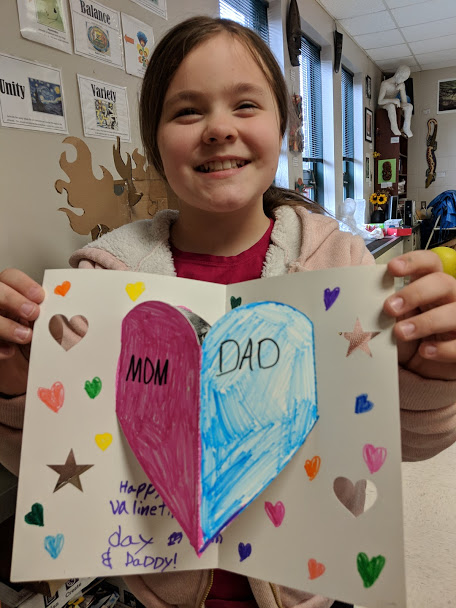







![IMG_0293[1].jpg](https://images.squarespace-cdn.com/content/v1/547e19fae4b050348997f495/1543350454926-XFJB19PAAD3RQWEQ6JOR/IMG_0293%5B1%5D.jpg)




